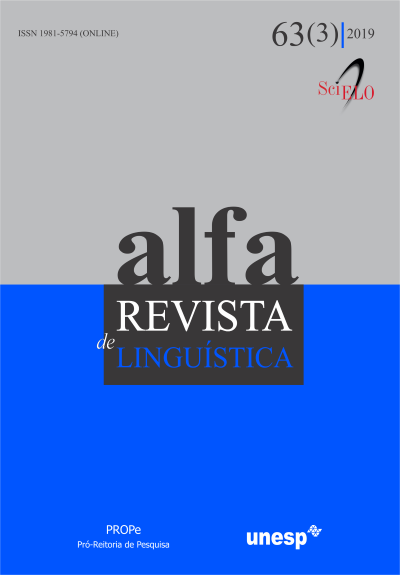Ordering and sequencing of questions for reading: a proposal to work with chronicles and painting in text books
DOI:
https://doi.org/10.1590/1981-5794-1911-8Keywords:
Ordering, Sequencing, Reading questions, Textbook,Abstract
The present study analyzes the types of questions and their sequencing in a compilation of text books aimed at 6th to 9th grades, particularly in the section “Cruzando Linguagens” (Across Languages). The latter presents questions for the reading of different genres sharing similar themes. Thereafter, a new sequencing of questions is proposed for one of the activities suggested by the 6th grade text book, aimed at the genres chronicle and painting. This study focuses on views about reading from an interactionist perspective, Applied Linguistics studies, and the practice of ordering and sequencing of reading, as advocated by Solé (1998) and broadened by Menegassi (2018; 2010; 2016), Fuza and Menegassi (2018; 2017) and Fuza (2017). Of the many questions proposed in the section, for the most part, only one allows for an intertextual thematic dialogue. Hence, the following was suggested: analysis of text book questions aimed at the genres chronicle and painting; a new sequencing of questions; and scrutinizing of thematic lacunae. Subsequently, a theoretical-methodological proposal of ordering and sequencing of questions was put forward, focusing on intertextual dialogue. This allowed readers to: establish a dialogue among texts sharing a similar theme; come up with textual, inferential and interpretive answers comprising the main ideas of the texts; produce meanings relative to the themes presented, thus reaching textual and inferential comprehension, as well as interpretation of the text, which allowed for relative exhaustibility to the theme.
Downloads
Downloads
Published
How to Cite
Issue
Section
License
Manuscripts accepted for publication and published are property of Alfa: Revista de Linguística. It is forbidden the full or partial submission of the manuscript to any other journal. Authors are solely responsible for the article's content. Translation into another language without written permission from the Editor advised by the Editorial Board is prohibited.

